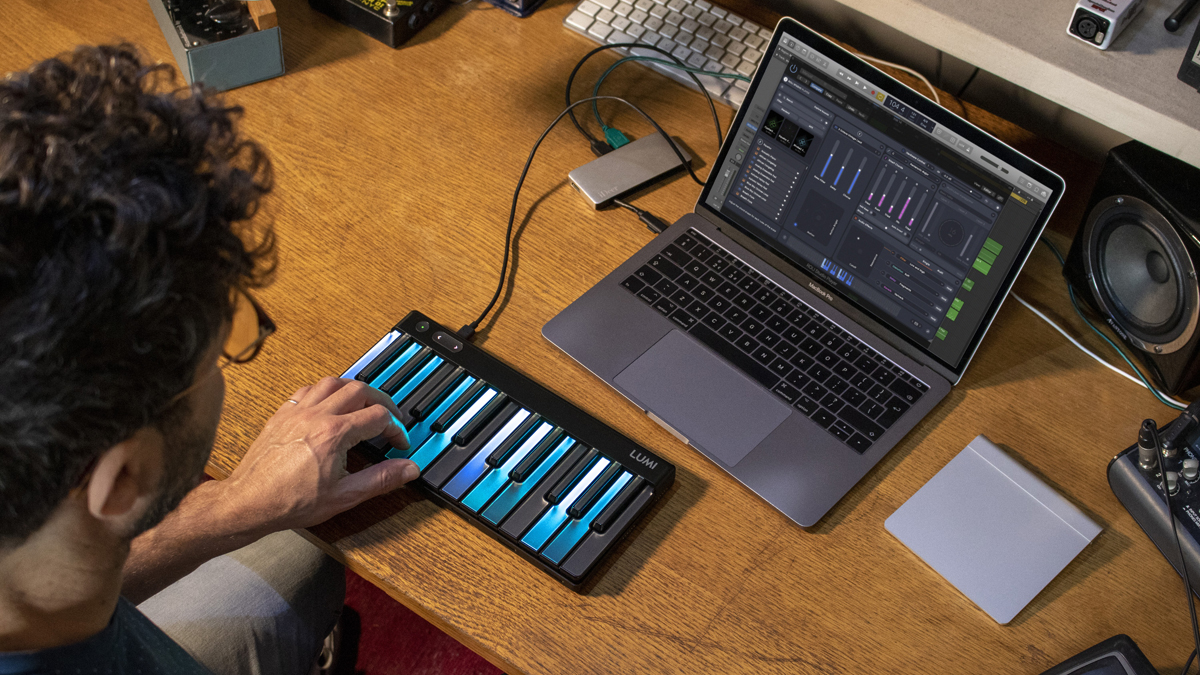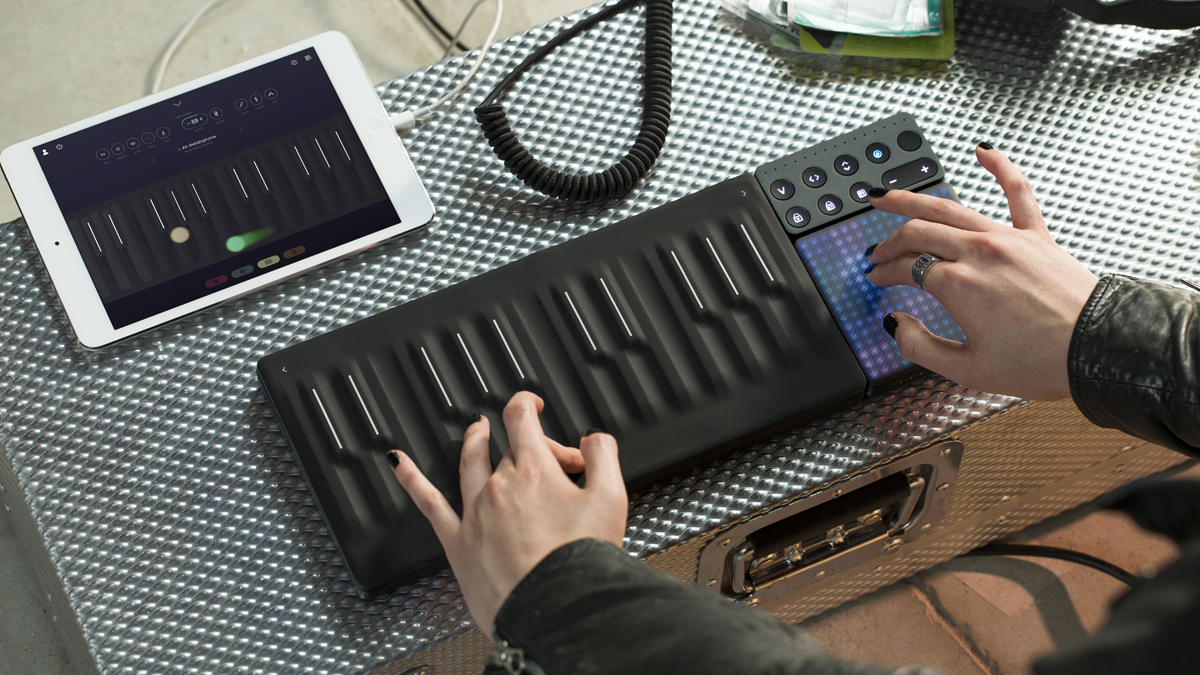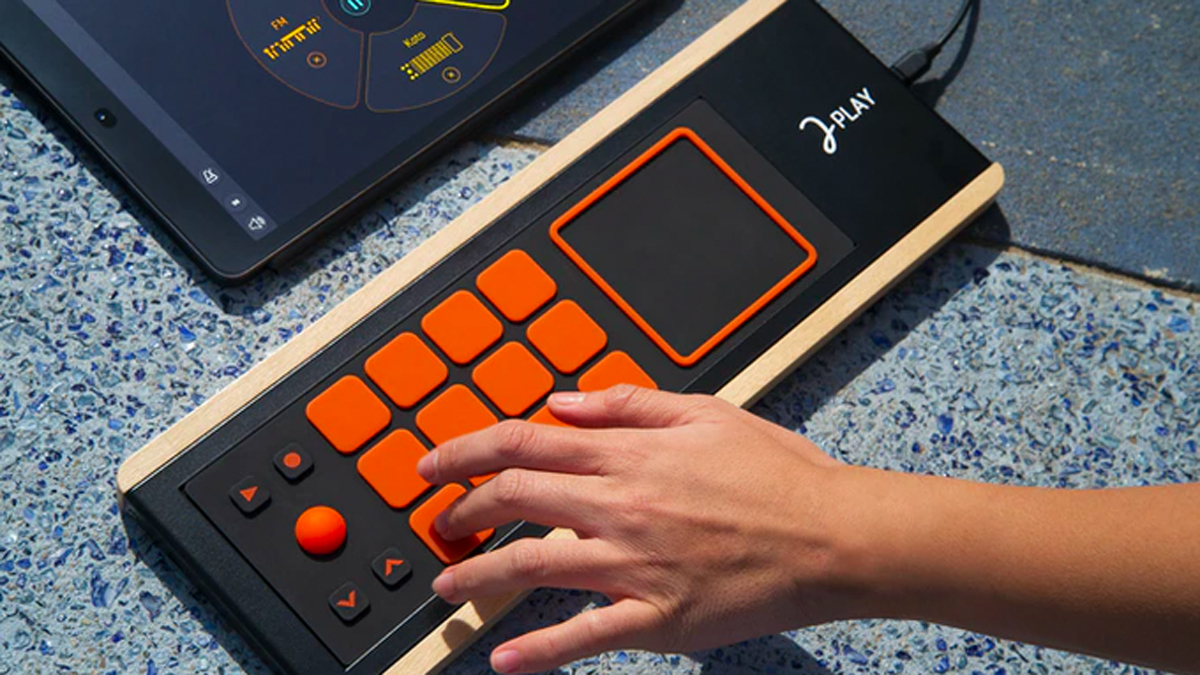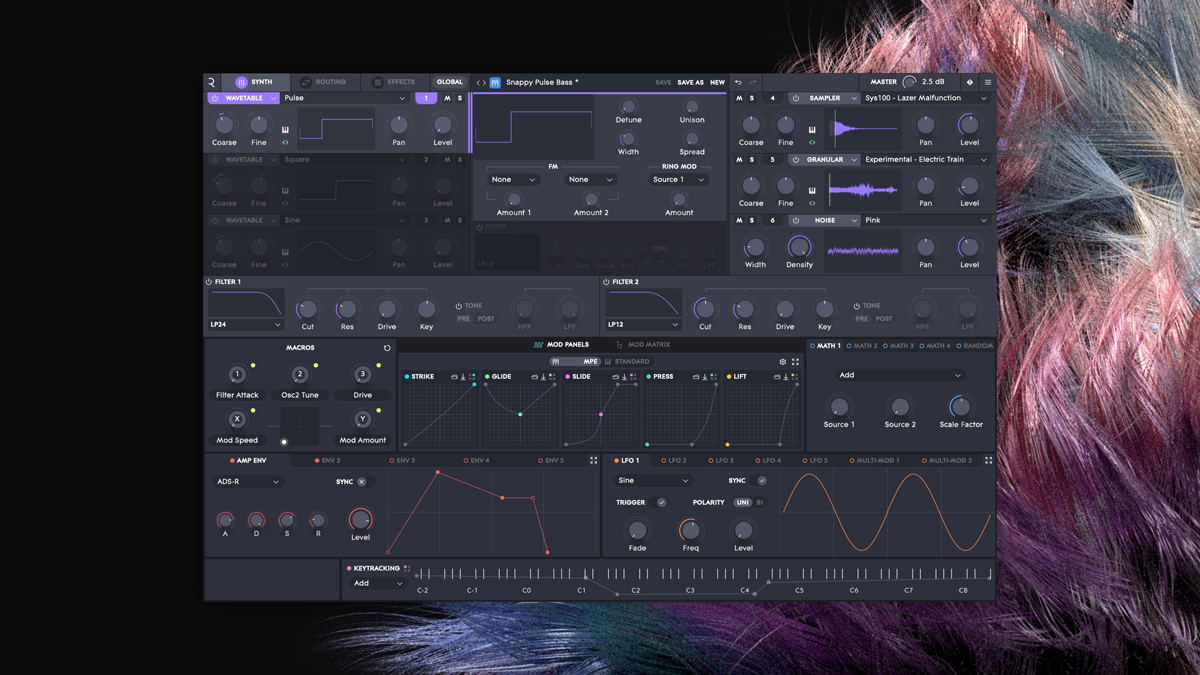What is MPE… and why should you care about it?
It feels like MIDI Polyphonic Expression might finally be coming of age

Depending on how religiously you keep up with news and developments in music technology, you may have first heard the term MPE some time around five or six years ago. Largely popularised by UK brand ROLI, the initialism originally stood for Multidimensional Polyphonic Expression, although in recent years it’s become MIDI Polyphonic Expression after being officially adopted by the MIDI Association.
Despite this name change and ‘going official’, the concept behind MPE has remained unchanged. The idea is to allow for more nuanced and acoustic-like control of electronic instruments, replicating the modulation and articulation applied to individual notes by guitarists or sting players.
This is done by sending/receiving additional control messages along with each note. An MPE controller will transmit multiple ‘dimensions’ of expression alongside each note’s pitch - in the case of ROLI gear, these are labelled Strike, Glide, Slide, Press and Lift, but the amount and naming can vary depending on what software and controller you use.
While MPE itself is a relatively recent term, the underlying technology behind it isn’t actually new. MPE is an extension to the existing MIDI protocol, meaning the tech it uses has existed since MIDI was first created in the early 1980s. While they’re often given new names, the ‘expressions’ used by MPE controllers are based on things MIDI devices have been capable of for years.

Sticking with ROLI’s terminology, Strike is simply velocity, Glide is pitchbend, Press is aftertouch, Lift release velocity and Slide is a modulation signal similar to a mod wheel on a standard keyboard.
What sets MPE controllers apart, however, is that they send each of these messages on a per-note basis. When playing a chord with a traditional MIDI keyboard, using the pitch wheel will alter the pitch of every note in that chord simultaneously. With an MPE controller, sliding just a single finger in a chord shape to a new note will alter the pitch of just that note, leaving any other notes in the chord completely unaffected.
MPE does this by using multiple MIDI channels simultaneously. The MIDI protocol uses 16 channels, and standard MIDI gear usually requires the use of only one of these. Traditionally, these multiple channels have been used for multitimbral control, or to allow musicians to chain multiple instruments from a single MIDI output - you could, for example, sequence a synth on channel 1, then make use of that synth’s MIDI thru port to send MIDI to a second synth assigned to channel 2.
Want all the hottest music and gear news, reviews, deals, features and more, direct to your inbox? Sign up here.
MPE devices assign each note its own MIDI channel, with a further channel used for global messages such as program change. Effectively, think of it like controlling separate instruments for each note, all from a single controller.
Just as the underlying tech isn’t entirely new, the concept of expressive controllers isn’t entirely unique to ROLI, either. Back in 1999 Dr Lippold Haken created the Continuum, a synthesiser focussed around a highly-sensitive touch fingerboard designed for advanced polyphonic expression. The Continuum and its various offshoots are still available today, and although they work with the MPE protocol their creator still states that the Continuum fingerboard is more sensitive and faster than any other device on the market. There was also the Eigenharp, a kind of space-age saxophone that arrived in 2009.
In more recent times, alongside ROLI creator Roland Lamb, several other instrument designers have played a key role in the development and popularisation of MPE, including QuNexus creator Keith McMillen and Roger Linn, who launched his own MPE controller in the form of the LinnStrument.
Why should you care?
Early iterations of MPE controllers were fairly easy to write off as niche and often expensive oddities. The original Seaboard Grand from ROLI retailed at around $2,000, and the Haken Continuum goes for over double that.
Even as more affordable controllers began to appear, it wasn’t immediately obvious what to do with them. While the Seaboard Grand and Continuum made use of internal sound engines, the LinnStrument originally involved a fair amount of user setup, meaning potential users needed the ability to imagine precisely how they’d make use of it in their setup. Similarly, when we first tried out ROLI’s affordable Blocks range, we were, in all honesty, fairly underwhelmed by the somewhat limited implementation.
So what’s changed? For one thing, expressive MIDI controllers are becoming more affordable. ROLI’s own Blocks and LUMI ranges are both available below £300, while other brands such as Joué, Sensel and Artiphon have their own unique takes on the ‘expressive’ controller concept that can be picked up around the same price point.

More importantly though, implementation has become far more mainstream. Several major DAWs, including Logic, Cubase, Waveform, Bitwig and, most recently, Live 11, now offer simple plug-and-play compatibility with MPE controllers. In most cases at least some of their internal instruments can be used for MPE sounds, too.
As for ROLI, back in 2016 the brand acquired UK plugin developer FXpansion, which proved to be a savvy move. Within a few years new versions of the company’s popular Strobe and Cypher soft synths had appeared, each equipped with deep MPE integration and a ton of expressive presets.
Most recently, the company has launched a new version of its own Equator synth, which started life as a Seaboard sound engine but has evolved into a hugely powerful ‘super synth’ in its own right.
Other soft synths have come onboard, too, including the likes of Xfer Serum, Hive and Bazille from u-he, Omnisphere, Reaktor and even a good number of iOS apps. As a consequence, if you pick up an MPE controller in 2021, there’s a good chance you’re already geared up with an instrument ready to make use of it with minimal setup.

As a result of both of these things, MPE is no longer of sole interest to the skilled keyboardists out there. While, naturally, a bit of playing skill will help you make the most of an expressive controller, there are plenty of ways that even the most ham-fisted electronic musician can use MPE synths for interesting sound design.
Try, for example, using a synth like Equator 2 or Omnisphere to build drones or pads that allow you to hold a single chord but blend between different timbres using slides or aftertouch.
As DAW updates have become increasingly more MPE-friendly, too, it’s so far a lot easier to quantise, refine and edit MIDI recorded by an MPE controller. Although the exponential increase in expression data can still be a little time consuming, it does mean there’s far less pressure to be able to nail the perfect take when recording.
If nothing else, it seems like we’ve reached a tipping point now where MPE no longer runs the risk of being a fad that might lose support in the long run. The software implementation mentioned above is unlikely to be dropped in the near future, even as MIDI 2.0 begins to roll out.
Whereas early adopters of Seaboards or Linnstruments might have run a slight risk that the format might end up as something of a dead end if the controllers didn’t catch on, it’s pretty safe to say that you can now incorporate MPE control or sounds into your music making without worrying about longevity.


Future Music is the number one magazine for today's producers. Packed with technique and technology we'll help you make great new music. All-access artist interviews, in-depth gear reviews, essential production tutorials and much more. Every marvellous monthly edition features reliable reviews of the latest and greatest hardware and software technology and techniques, unparalleled advice, in-depth interviews, sensational free samples and so much more to improve the experience and outcome of your music-making.
